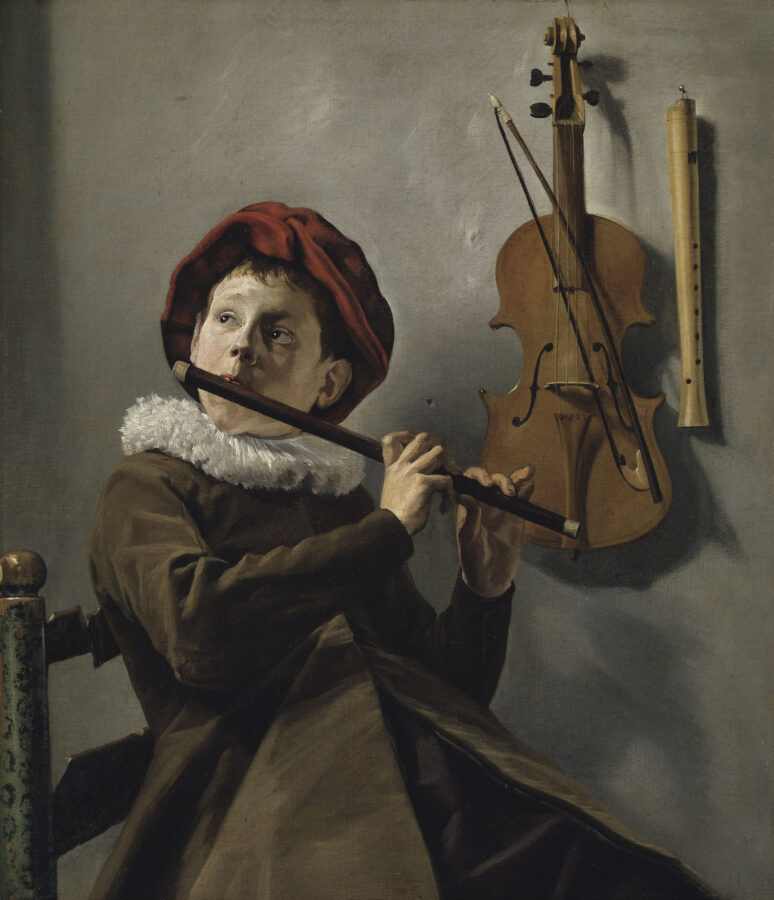
The Young Flute Player
Judith Leyster, ca. 1630 — 1635
Nationalmuseum, Stockholm
One of the most renowned female painters in seventeenth-century Holland, Judith Leyster, possessed a distinct artistic personality. Thought likely to have associated with the workshop of Frans Hals in the middle to late 1620s, she is known to have entered the Haarlem Guild of St. Luke in 1633 as an independent master. Her relatively small oeuvre of approximately 35 recognized works consists mainly of images of so-called everyday life, now referred to as ‘genre’ scenes, with a number involving the representation of music making. In The Young Flute Player, it is as if Leyster wants us to hear the music. Encircled by the enveloping folds of his red hat and the delicate pleats of his white lace collar, the boy’s face commands our attention. His upturned countenance toward the natural light streaming in from an unseen window results in the enchanting glint in his eyes. One side of his head is sharply illuminated, the other rendered in shadow. And at the very juncture of light and shade, we perceive his taut lips blowing into the traverso flute. The silence, as it were, is broken.
— Lawrence W. Nichols, William Hutton Senior Curator, European and American Painting and Sculpture before 1900, Toledo Museum of Art, Toledo, OH, USA
Object details
The Young Flute Player ca. 1630-35
Oil on canvas | 73 x 62 cm | NM1120
Stockholm, Nationalmuseum
Judith Leyster
(Haarlem 1609-1660 Heemstede)
Gallery








Explore more
High resolution image and street view
See on Google Arts & CultureJudith Leyster, Leading Star
Article by Erika Gaffney on Leyster as female artist
Read on artherstory.net